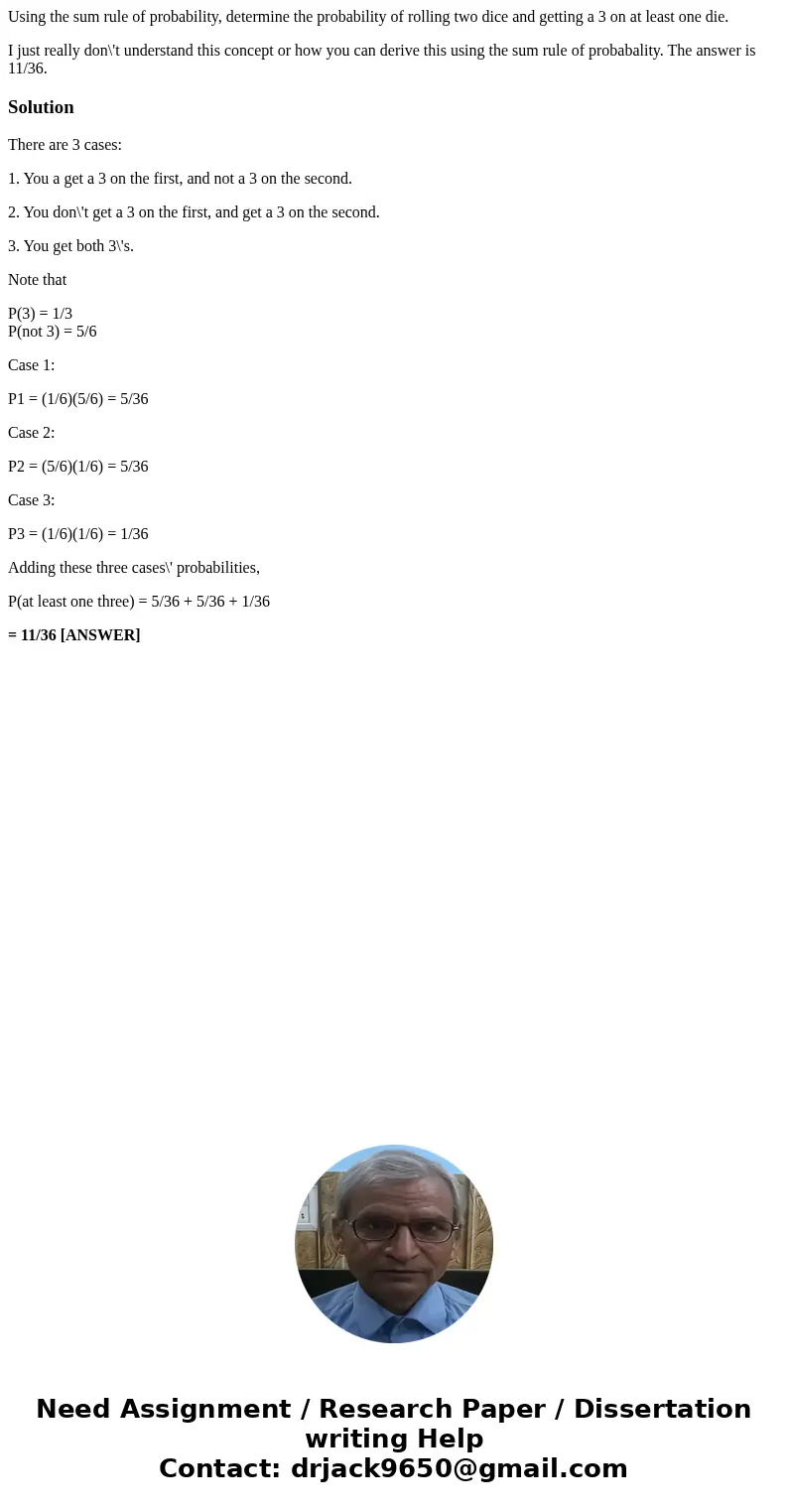Using the sum rule of probability determine the probability
Using the sum rule of probability, determine the probability of rolling two dice and getting a 3 on at least one die.
I just really don\'t understand this concept or how you can derive this using the sum rule of probabality. The answer is 11/36.
Solution
There are 3 cases:
1. You a get a 3 on the first, and not a 3 on the second.
2. You don\'t get a 3 on the first, and get a 3 on the second.
3. You get both 3\'s.
Note that
P(3) = 1/3
P(not 3) = 5/6
Case 1:
P1 = (1/6)(5/6) = 5/36
Case 2:
P2 = (5/6)(1/6) = 5/36
Case 3:
P3 = (1/6)(1/6) = 1/36
Adding these three cases\' probabilities,
P(at least one three) = 5/36 + 5/36 + 1/36
= 11/36 [ANSWER]

 Homework Sourse
Homework Sourse